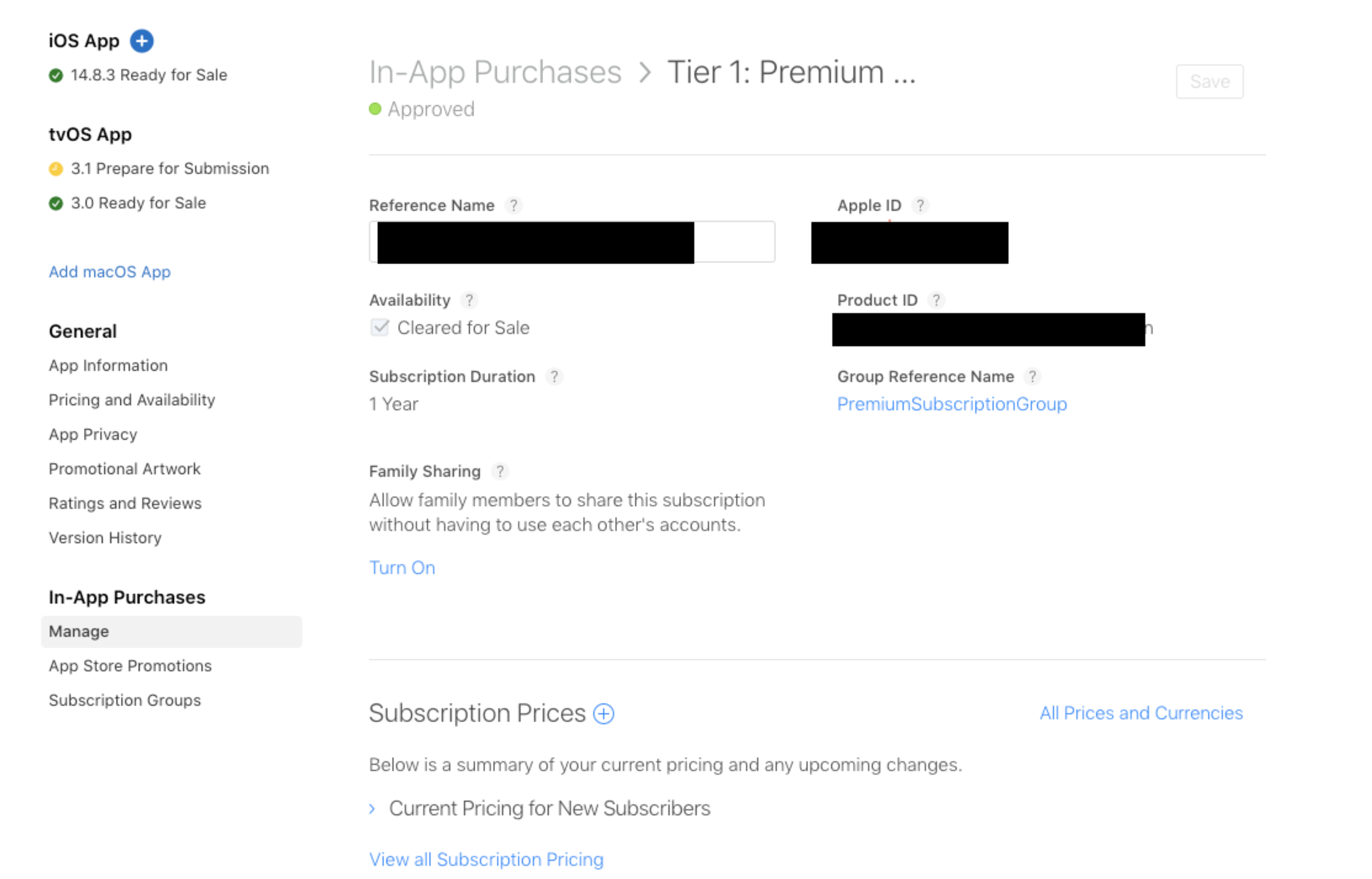AccuWeather meteorologists are available 24/7 to provide further insights and updates on evolving weather conditions. Please contact pr@accuweather.com during regular business hours, or support@accuweather.com or call AccuWeather’s Media Hotline at (814)-235-8710 at any time to arrange interviews with AccuWeather experts or to request the most updated graphics for print or broadcast.
Major hurricane landfall expected in Cuba; Impacts from Rafael could reach the US Gulf Coast this weekend
Nov. 6, 2024
> Rafael is now a 3 on the AccuWeather RealImpact™ Scale for Hurricanes for Cuba, which warns of widespread and substantial flooding, structural damage to buildings, especially mobile homes, as well as downed trees, power outages and major coastal inundation
> Tropical moisture ahead of Rafael will soak parts of the Southeast US with an AccuWeather Local StormMax™ of 15 inches of rainfall possible.
> AccuWeather is monitoring two additional areas for potential tropical development in the Atlantic basin through this weekend
AccuWeather Global Weather Center – Nov. 6, 2024
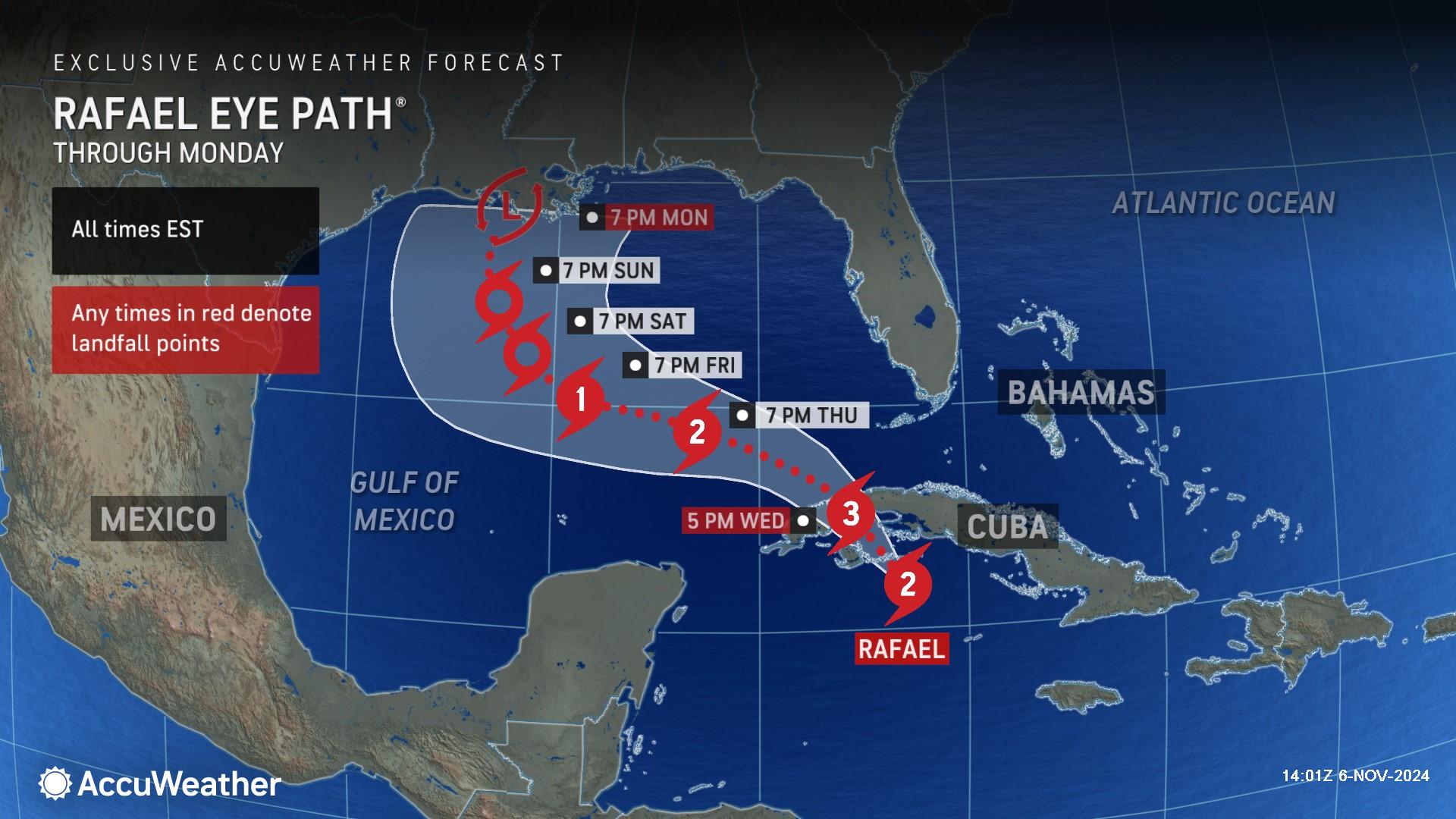
“Small storms in the right atmospheric conditions can intensify quickly. That’s what’s happening with Rafael. We’re concerned about significant hurricane impacts in Cuba,” said AccuWeather Chief Meteorologist Jon Porter. “The center of Rafael looks like a buzz saw approaching Cuba. All signs point to Rafael rapidly intensifying before it crosses over Cuba.”
AccuWeather hurricane experts are forecasting Rafael to reach major hurricane strength as a Category 3 with maximum sustained winds of 111-129 mph on Saffir-Simpson Hurricane Wind Scale before it makes landfall in Cuba on Wednesday.
“AccuWeather is forecasting Rafael to reach Category 3 strength before slamming Cuba,” said AccuWeather Chief On-Air Meteorologist Bernie Rayno. “The forecast then gets complicated as Rafael enters the Gulf of Mexico.”
Porter said families and businesses in the Florida Keys should be prepared for impacts.
“The middle and lower Florida Keys will be dealing with winds gusting to 60 mph, heavy rainfall and the potential for 2-3 feet of storm surge,” said Porter.
Rafael is forecast to bring a swath of 4-8 inches of rainfall to parts of central and western Cuba, with an AccuWeather Local StormMax™ of 14 inches. This rain can lead to flash flooding, landslides and difficult travel in parts of Cuba. As the storm moves into the Gulf of Mexico, 1-2 inches of rain can fall from western Florida north through the central Gulf Coast through the end of the week.
Wind gusts between 40and 60 mph are expected across central and western Cuba. A small area near where the storm makes landfall in Cuba could experience higher gusts of 100-120 mph with an AccuWeather Local StormMax™ of 130 mph. These winds can bring down trees and power lines, cause damage to infrastructure and turn loose objects into missiles, compounding the damage.
A 6- to 10-foot storm surge is expected near and just to the east where the storm makes landfall in western Cuba with an AccuWeather Local StormMax™ of 13 feet. A storm surge of 1-3 feet can also occur in the Florida Keys.
Tropical rainfall ahead of Rafael
AccuWeather hurricane experts say a plume of tropical moisture streaming ahead of Rafael will bring rounds of heavy rainfall to portions of the Southeast Wednesday through Thursday.
A zone of 4-8 inches of rainfall is expected from portions of the panhandle of Florida into South Carolina with an area of 8-12 inches across parts of eastern Georgia and southwestern South Carolina. The AccuWeather Local StormMax™ is 15 inches.
Localized urban and flash flooding will be possible from areas of northern Florida to South Carolina. AccuWeather hurricane experts say localized flash flooding is possible and could pose a threat to lives and property. Widespread or catastrophic flooding impacts similar to what happened during Helene are not expected.
Hostile conditions in the Gulf of Mexico
Following a hurricane season with exceptionally high water temperatures and conducive conditions that allowed storms to explode in intensity in the Gulf of Mexico, AccuWeather hurricane experts expect Rafael to lose wind intensity quickly when the storm encounters hostile atmospheric conditions later this week.
“Rafael will essentially encounter a paper shredder in the Gulf of Mexico. The wind shear and dry air will shred this storm apart,” Rayno explained. “Rafael will likely be the first hurricane this season that enters the Gulf of Mexico and is not expected to make landfall in the U.S. as a named storm. That’s welcome news after such an impactful hurricane season.”
Porter says Rafael is expected to be much less organized by the time impacts reach the Gulf coast this weekend.
“Everyone along the Gulf coast should closely monitor forecast updates. The trend is favoring less impacts from Rafael this weekend and early next week,” said Porter. “Dry air and intense wind shear will tear Rafael apart in the Gulf of Mexico. The hurricane will quickly lose wind intensity as it approaches the coast. There is a possibility that Rafael could end up meandering in the Gulf off the coast of Louisiana and never make landfall in the U.S. as it falls apart into a cluster of thunderstorms.”
Rafael and its winds will be large enough and strong enough to create rough seas over the Gulf of Mexico, creating rough surf and triggering beach erosion along shores. Some coastal flooding is likely to the north and east of the storm track, should it make landfall.
Rafael is now a 3 on the AccuWeather RealImpact™ Scale for Hurricanesfor Cuba, which warns of widespread and substantial flooding, structural damage to buildings, especially mobile homes, as well as downed trees, power outages and major coastal inundation.
Rafael is a less than 1 on AccuWeather RealImpact™ Scale for Hurricanes for the United States, which warns of limited damage from wind and rain and coastal inundation, resulting in some property damage.
In contrast to the Saffir-Simpson Hurricane Wind Scale, which classifies storms by wind speed only, the AccuWeather RealImpact™ Scale is based on a broad range of important factors. In order to better communicate a more comprehensive representation of the potential impact of a storm on lives and livelihoods, the scale covers not only wind speed, but also flooding rain, storm surge and economic damage and loss. Some of these hazards, such as inland flooding and storm surge in many storms, result in more deaths and economic loss than wind.
More trouble brewing in the tropics?
AccuWeather meteorologists are closely monitoring two areas that could form another tropical depression or storm in the Atlantic basin before the end of this weekend.
One area is near the Leeward Islands and north of the Caribbean islands. A second area is being monitored off the coast of Africa.
AccuWeather hurricane experts warned in late October of a final surge of tropical storms expected in the month of November, forecasting one to three named storms to develop in the Atlantic basin during the month of November. Subtropical Storm Patty and Hurricane Rafael both formed during the first week of November.
Sara is the next name on the list of tropical storms for the 2024 Atlantic Hurricane season after Rafael.
AccuWeather Forecast Graphics
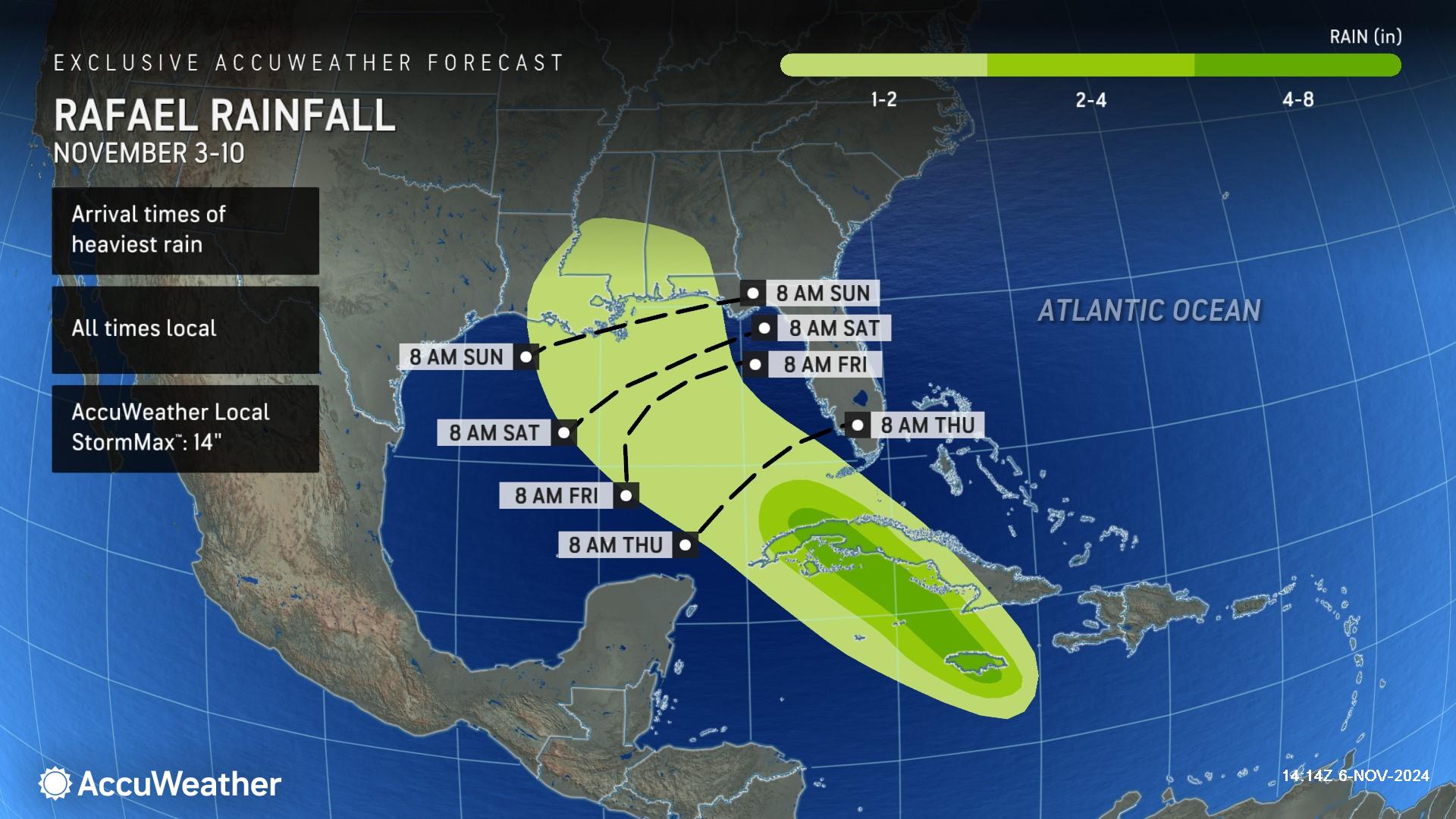
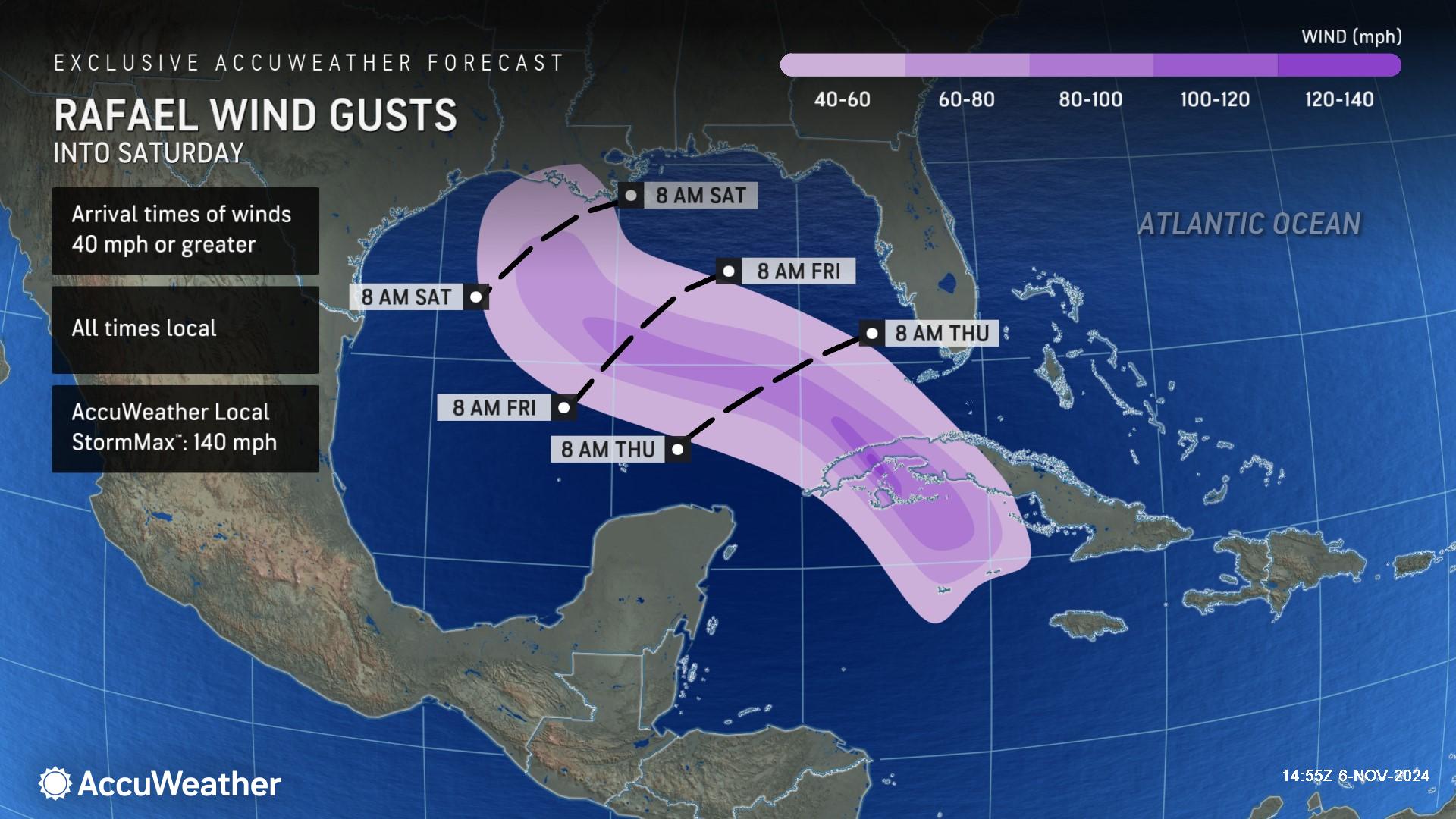
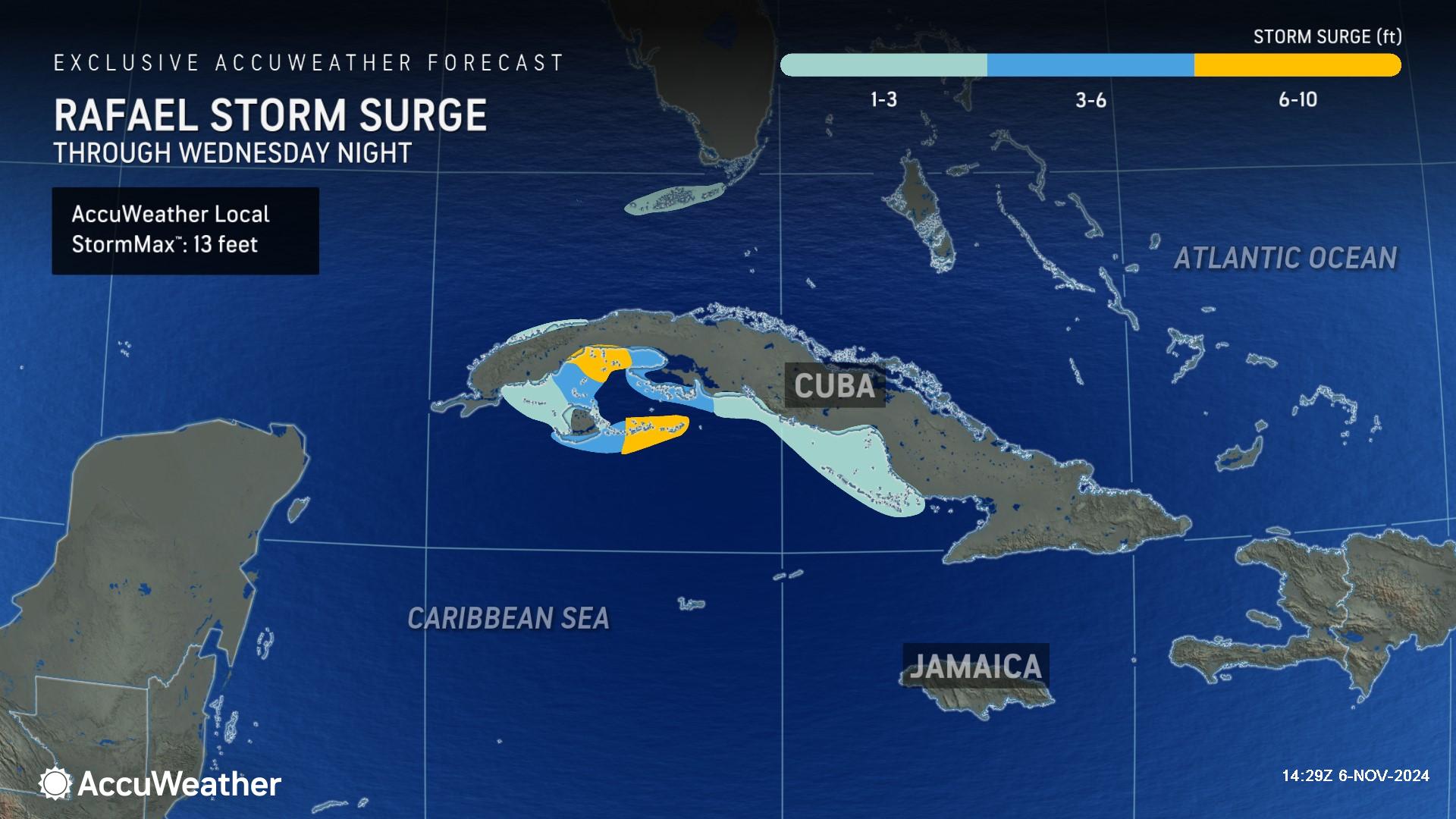
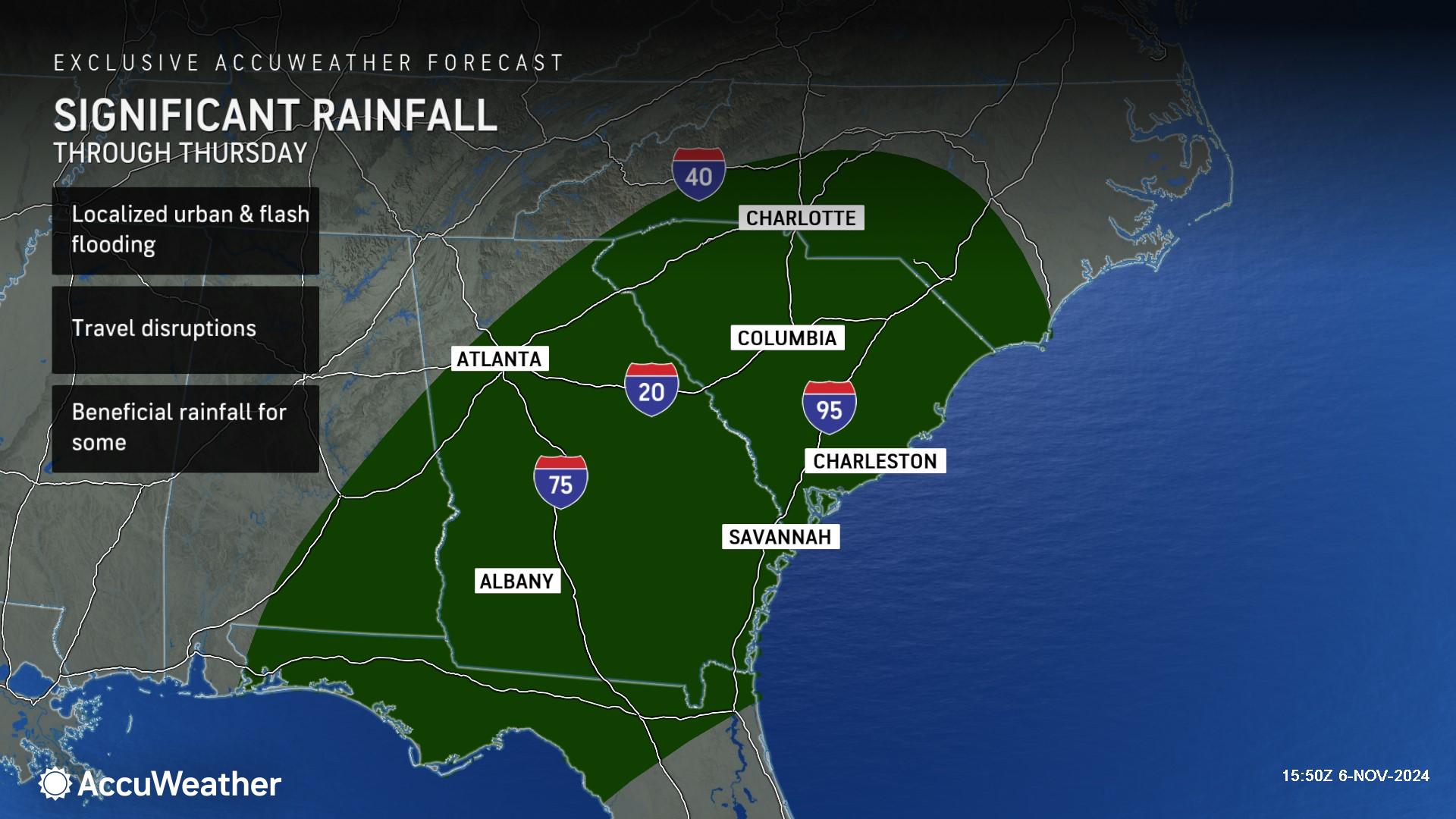
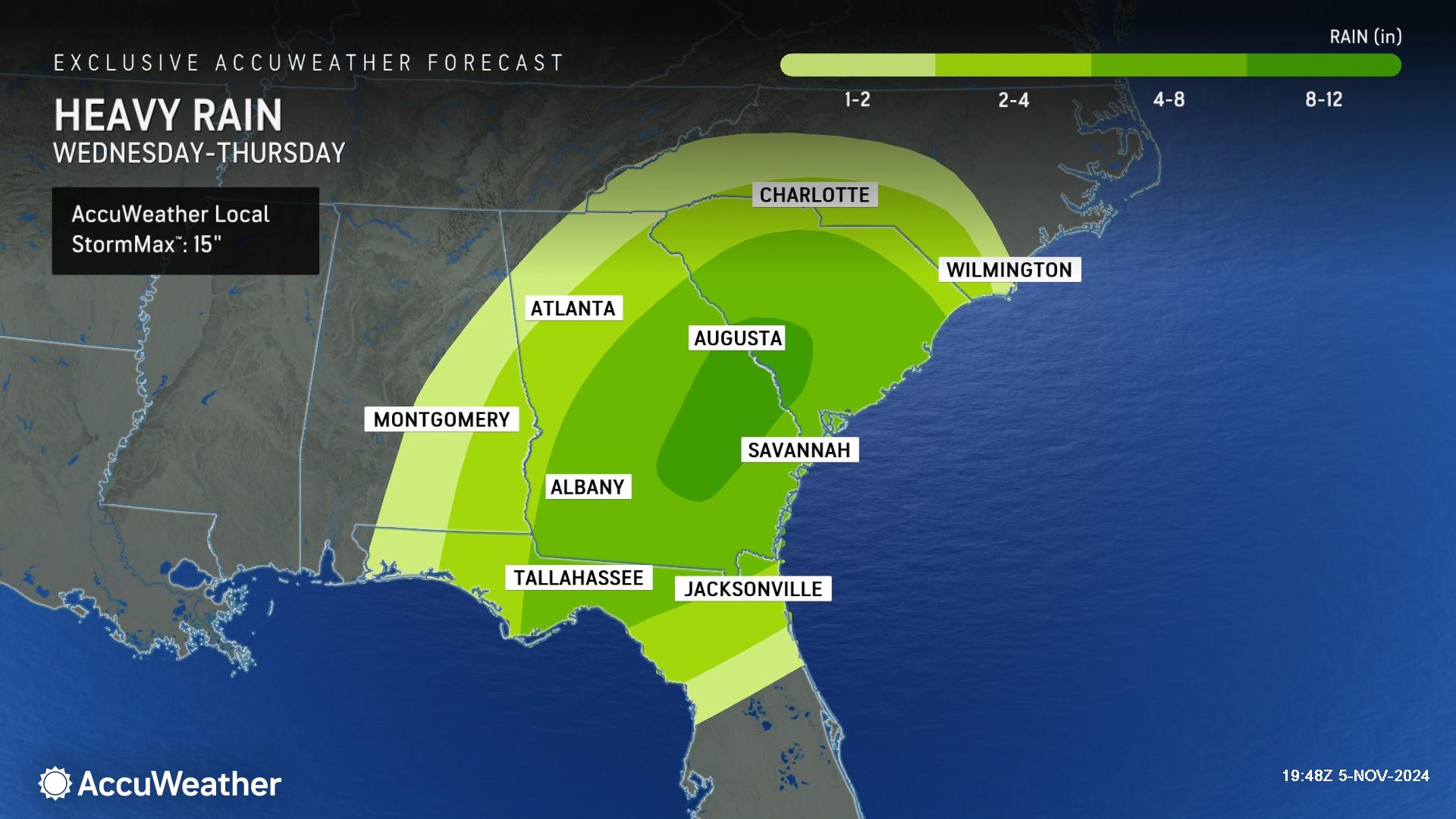
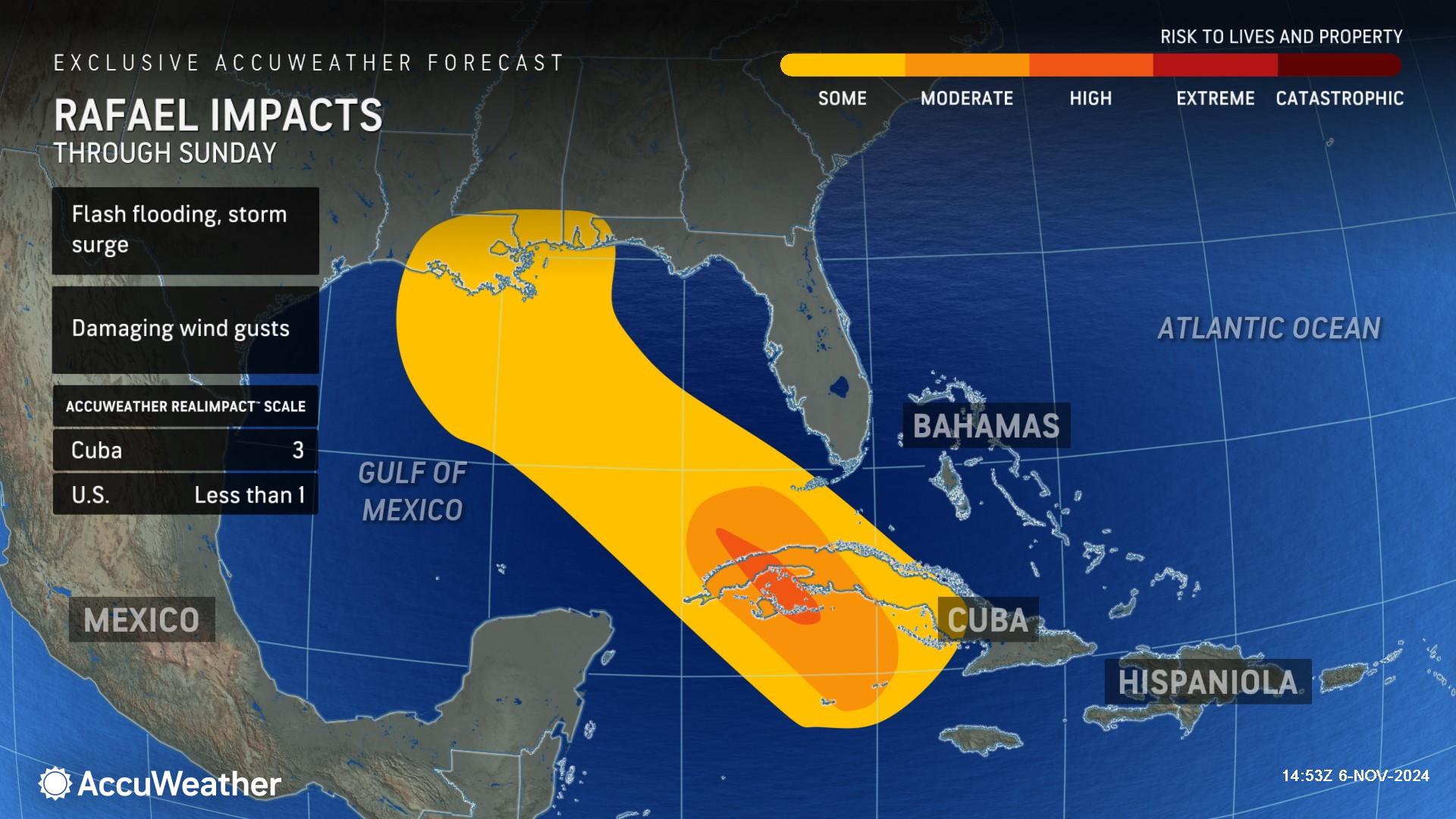
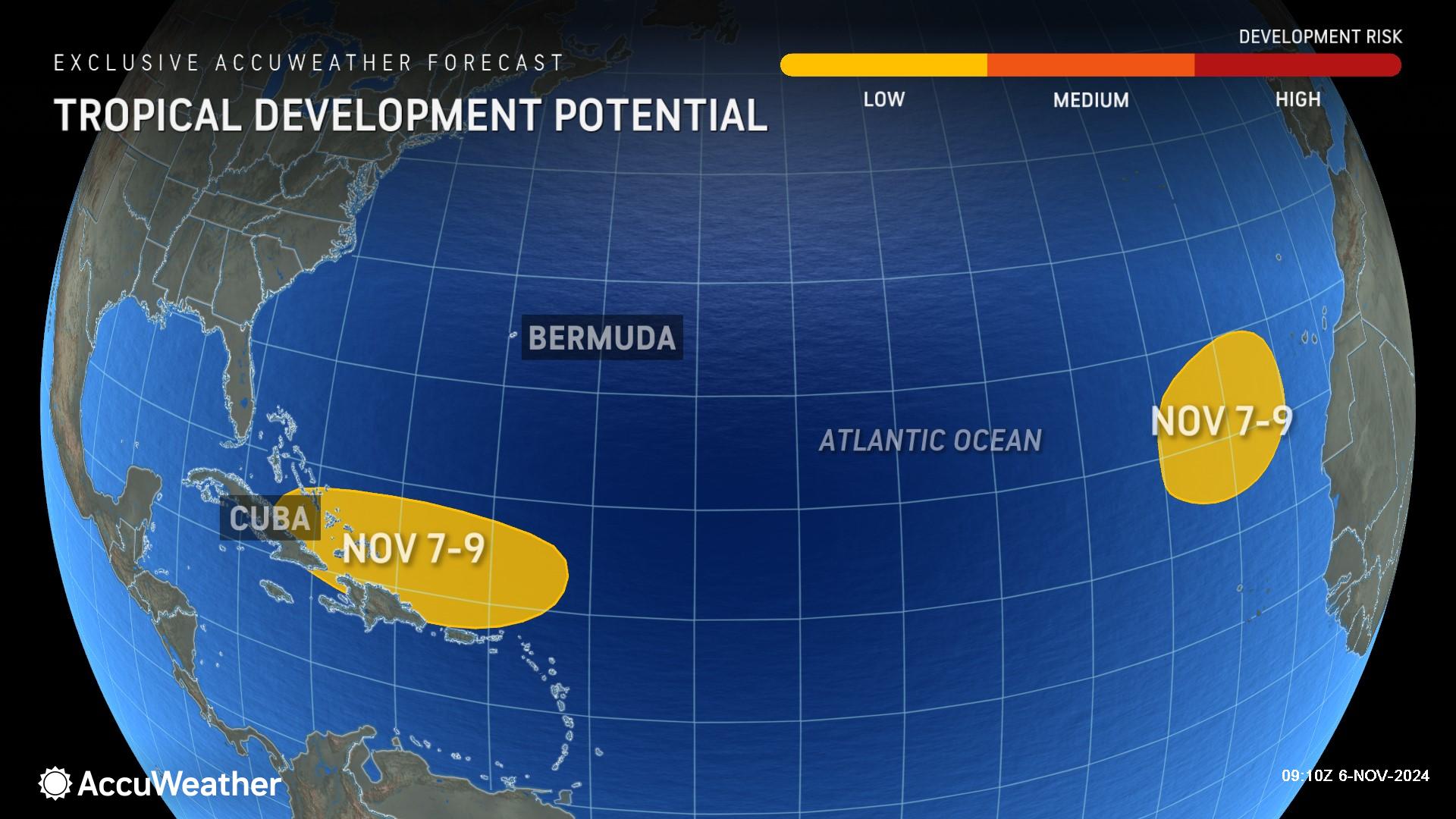
Additional AccuWeather Resources:
Tropical storm likely to brew in Caribbean, may reach US
Severe storms, flooding to impact central US through Election Day




